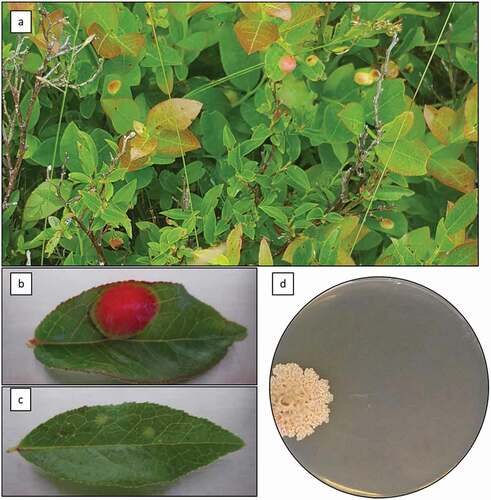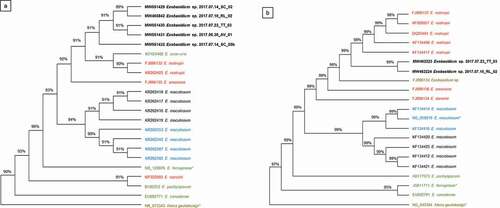Figures & data
Table 1. List of isolates included in this study
Fig. 1 (Colour online) Atypical Exobasidium-leaf-spot-like disease symptoms on Vaccinium angustifolium caused by Exobasidium sp. Symptoms on wild plants in Holyrood, NL, July 23, 2018 (a); close-up of atypical symptoms on detached leaf of V. angustifolium showing large, raised lesion (b); typical Exobasidium leaf spot symptoms on detached leaf of V. angustifolium (c); two-month old colony of Exobasidium sp., isolated from atypical leaf spot symptoms, on PDA+AB after 2 months of growth at 23 °C in the dark (d)

Fig. 2 (Colour online) Neighbour-joining trees depicting the relationship between sequences from Exobasidium spp. isolates originally collected from Vaccinium spp. and related host species (). Bootstrap values are expressed as percentages on the nodes of each branch. Colours indicate the host from which the isolate was originally obtained: black text represents samples collected from V. angustifolium; blue text represents isolates from V. virgatum or V. corymbosum; red text indicates isolates from other Vaccinium spp.; green text indicates isolates from other Ericaceae; and brown text indicates a host origin outside the Ericaceae. Isolates in bold were collected in this study, and an asterisk indicates type strains. Sequences from either (a) ITS or (b) LSU were used to construct each tree

